Nightlife in the San Salvario district of Turin. Photograph: Giulio Giacconi
Contents
Overview
By Jonathan Lee, author of the Wallpaper city guide to Turin
In the first of a series of guides to Europe’s alt cities, we head to Turin, where a new generation has transformed the old factory city into the beating heart of Italy’s progressive music, food and arts scenes. Here, they tell us about the best clubs, festivals, restaurants and creative hubs in town
• Music mogul Maurizio Vitale on how Torino has reinvented itself
Turin could be the blueprint for the post-industrial city of the future. Once Italy’s manufacturing powerhouse, spearheaded by the mighty Fiat, the city expanded rapidly beyond its elegant heart of Paris-style boulevards throughout the 20th century. But by the 1980s, global competition had put the brakes on the city’s economy: more than 100,000 workers lost their jobs and thriving factory districts withered to moribund hinterland.
• Music mogul Maurizio Vitale on how Torino has reinvented itself
Turin could be the blueprint for the post-industrial city of the future. Once Italy’s manufacturing powerhouse, spearheaded by the mighty Fiat, the city expanded rapidly beyond its elegant heart of Paris-style boulevards throughout the 20th century. But by the 1980s, global competition had put the brakes on the city’s economy: more than 100,000 workers lost their jobs and thriving factory districts withered to moribund hinterland.
But since then this most pragmatic of Italian cities has chosen to invest and reinvent with gusto, carving out new cultural spaces, sprucing up old classics such as Museo Egizio and Del Cambio, and splurging on trams and metro trains. For proof, hop north of the centre to Parco Dora, a former factory district once whirring with the production lines of Fiat, Michelin and carpet manufacturer Paracchi. Now completely transformed, the park’s centrepiece is a picked-clean skeleton of soaring girders, creating a vast space for kids to skate and scoot, play basketball and football, and turn out in their thousands for gigs and events such as Kappa FuturFestival.
Head east to find Barriera di Milano, a once-deprived quarter now blooming with artists’ studios and microbusinesses in places such as the 1912 warehouse complex Docks Dora, which is flanked by another showpiece reclamation project, Parco Aurelio Peccei. Just south of Barriera di Milano, in Aurora, lies the nascent Lavazza quarter, soon to house the coffee giant’s new HQ, and down the road is cultural hub Fitzlab, artist collective Diogene and Teatro Espace. Hugging the other side of the Dora Riparia river in Vanchiglia is Foster + Partners’ curvaceous new Campus Luigi Einaudi, while to the west in Borgo Dora is performance venueCortile del Maglio and writing school Scuola Holden.
Of course, Turin doesn’t get it right every time. To the south, the Olympic Village’s shopping complex is an abandoned shell, and while biking around this pancake-flat metropolis should be a breeze, the cycle network is patchy and you have to sign up in advance before you can pick up a bright yellow [TO]BIKE from one of the city’s 116 docking stations.
Also, it’s important not to overlook two areas that have already “up and come”. The gentrifying southern district of San Salvario still offers the best bars andapericena in town, particularly around the crossroads of via Sant’Anselmo and via Giuseppe Baretti. And a trip further south to Lingotto, home of the Fiat mothership, is a must, if only to relive scenes from The Italian Job on its service ramp. Here you can dine at slow food emporium Eataly and get even closer to the future inside Renzo Piano’s ground-breaking “bioclimatic” (naturally ventilated and cooled) skyscraper, Intesa SanPaolo Tower, complete with rooftop greenhouse.
Music/clubs/festival scene
By Giorgio Valletta, DJ and co-organiser of electronic music festival Club To Club
Turin has always been, in spirit, a laboratory. Half of Italy’s best dance and electronic music is produced here. If you’re coming for a weekend of spontaneous live music, you should definitely head for San Salvario or Vanchiglia. The latter quarter is more progressive and artistic, while San Salvario offers lots of intimate bars with live music and DJs. For me, Blah Blah is the de facto central venue. It’s got a rock and indie identity but dips into disco and rave too. Hop east across the river Po to find Cap 10100, a new live rock spot attracting a younger crowd.
I have a daily show called Primo Ascolto on Radio Flash and often head to San Salvario’s Astoria to track down emerging international artists such as multi-faceted Canadian producer, singer and songwriter Grimes. Vaghe Stelle, Turin’s leading electronica outfit, also plays here.
In Lingotto, there’s Hiroshima Mon Amour, a real institution based in a former school. It made its name by launching Torinesi rock, punk, reggae and pop acts before adding electronica to the mix. We have a very fertile local electronica scene and one of the most important festivals isTOdays, an August (28, 29, 30 in 2015) three-dayer withsPAZIO 211 as its key venue.
Two other important festivals are October’s Movement, which majors on house and techno, and Club To Club, my November festival, which attracted 40,000 people last year. We’ve shifted away from DJs a tad towards live electronica and guests such as Four Tet, Todd Terje and Jamie xx.
Another must is #raveon at Bunker in Barriera di Milano, an important club night running from September to June and organised by We Play the Music We Love.
I think Turin always pushes the agenda musically, but there’s also a hedonistic streak. It’s this combination that makes Turin so different and inspiring.
Where to eat and drink
By Maurizio Bray, co-founder of food blog Torino by GNAM!, with chef Vassily Andrusyshyn
Historically, the Piemontesi are introverts, but Turin is becoming more open, embracing organic wine and food, new ingredients such as lemongrass and ginger, and new international flavours.
Although it’s saturated, San Salvario is still the hotspot. I really like La Cuite (Via Baretti 11/G), a vineria and cocktail bar full of young people and serving tapas at reasonable prices. A few minutes around the corner is ORSO, a 2014 coffee “laboratory” serving feisty arabica and robusta from around the globe. It’s linked to artisan gelateria Mara dei Boschi (Via Berthollet 30/H) – try the mouthwatering, cream-free, marotto chocolate flavour.
Traditional Piemontese cuisine is rich and filling, with dishes heavy on butter, truffles and broths. For agnolotti Piemontese and the like, head to Ristorante Monferrato (Via Monferrato 6), founded in the leafy surrounds of Borgo Po in 1820.
Coming up, I see three big foodie trends in Turin. First, there’s the rise of “conscious cuisine”: organic, vegetarian and gluten-free piatti served in light, bright eateries such as Belfood Cucina in San Salvario, (Via Belfiore 15) and the central Cristina Perino (Via Carlo Alberto 28).
Secondly, there’s an emergence of street food, catering for the city’s growing university population. You can tuck into pane con la milza, a fried beef spleen sandwich from Sicily, at places such as Sole di Sicilia (Via Livorno 6). And thirdly, our food culture is becoming more international. For example, at Dora in Poi (Via Catania 21) in Vanchiglietta, the restaurant where Vassily and I work, all our base ingredients are Piemontese – such as rice, garlic and salmon – but we have created dishes with influences from northern Europe, Asia and South America, so you’ll see plenty of ceviche, dim sum, ramen-style soup and quinoa. Vassily’s minestrone di frutta verdura, tiny pieces of peach, pineapple and mango dotted with gianduja chocolate, has changed my life!
I would say Vanchiglia will be Turin’s key emerging quarter over the next couple of years. It used to be full of workshops, but the opening of Campus Luigi Einaudihas swept in places such as Pai Bikery, a bike workshop-cum-cafe serving brunches of fruit pancakes and excellent salads. My final recommendation isMagazzino 52, a contemporary enoteca (wine shop) opened this summer by Graziano Cipriano, serving trad-meets-international dishes and a bargain €20 fixed menu.
Torino is really a big village with a provincial feel, but there is a niche for people with an appetite for something different. The pace of change is just slower than Milan: slow food, slow change.
Arts/creative
By Ginevra Pucci and Stefania Poddighe, co-founders of November art fairFlashback
There’s currently a trend among the young to open new spaces across the city. That said, Turin’s creative scene is quite underground, so you have to seek out the best work. At its vanguard is the historic quarter of Barriera di Milano, which is being transformed by an influx of artists and galleries. The 2014 opening ofMuseo Ettore Fico has proved a tipping point. There’s a small exhibition of Fico’s vibrant landscapes, but where it really excels is in combining art and design with experimental theatre, dance and debates in a modern space. Close by there are lots of studios and galleries such as GAS, which champions local talents like sculptor Fabio Viale. South of here is Galleria Franco Noero, which shows mixed media work by Lara Favaretto and others.
“Next, I’d recommend heading south-west to explore established creative hotspots such as Fondazione Merz, which is great for live music, and Fondazione Sandretto Re Rebaudengo, which works closely with young artists.
Across the city, in Vanchiglia, you’ll find affordable works at new galleries such asNOPX, which excels at photography, and at Van Der and Quartz, both strong on below-the-radar creatives. Just north over the river is cultural centre Cripta747, a hub for Italian curators and artists.
Even the upmarket shopping and gallery district around via della Rocca offers surprises such as cool clothing store TAF, and it’s always worth visiting Lingotto’s expos to discover the next big thing in design.
We hold our Flashback art fair – which explores historical and modern art in a contemporary way – in early November (5-8). The whole world comes to town that week because there’s also the design festival Operae, art fairs Artissima andThe Others, and emerging talent showcase Paratissima.
It doesn’t matter when art was made; it’s all contemporary. It’s the emotion that it prompts in us today that’s the key.
Readers’ tips and Instagram
There’s no better guide to a city than word-of-mouth recommendations - from people who live there and people who have visited. We asked our readers to share their favourite experiences and Instagram pictures of Turin. These are just a few with more here:
Il Balon di Torino and Gelateria PopolareGet up early and head down to the Balon behind the Piazza della Repubblica, or Porta Palazzo as it’s more commonly known. It’s a big flea market where you will find a treasure chest of knick-knacks, cheap second-hand and vintage clothes, paintings, electronics, furniture, bikes ... the list goes on. If you get tired of rummaging for bargains, stop for a break at Gelateria Popolare for the best ice-cream in the city.
Hannah Brew
Hannah Brew
Egyptian MuseumYou need several hours to explore its four floors and many exhibits – from the Book of the Dead to grave goods, and the myriad statues of all sizes. I also loved watching ancient carved figures and hieroglyphs being restored by a specialist.
Rossi Writes
Rossi Writes
Mulassano CafèBuilt in pure Art Nouveau style and opened in 1907, Mulassano is a little gem of a cafe with just a few tables (three inside plus four outside in spring and summer). Mulassano invented the “tramezzino” sandwich, similar to those you’d find at an English afternoon tea, which every visitor should try.
Fabrizio Zanelli
Fabrizio Zanelli
Circolo dei lettorA great building in the beautiful Palazzo Graneri della Roccia dedicated to the public for reading. Come to be inspired – by the beautiful artwork of the building, the antique furniture or the regular events and talks by authors and professional speakers. You must ring a bell and enter a code at the gates in the courtyard before entering, which heightens the sense of enchantment. It’s the perfect spot in the city to indulge in Italian culture.
Lucy Serlenga
Lucy Serlenga
Culture, shopping, food and drinkTake a peek inside Palazzo Scaglia di Verrua – it’s a gem, like most hidden courtyards in our palazzi. For shopping, go to Piazza Benefica market and grab discounted designer gear and other bargains. At night, check out the Jazz Club Torino in Piazza Valdo Fusi and the birreria next to it for amazing local beers. Look for the Maestro del Gusto (Master of Taste) sign of quality outside delicatessens, eateries and bars.
Giorgia Pigato
Giorgia Pigato
By Jonathan Lee, www.theguardian.com
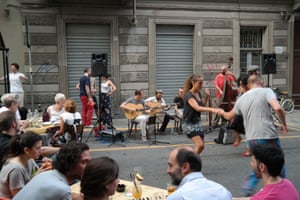
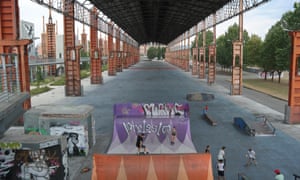
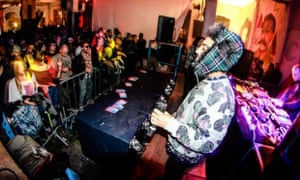
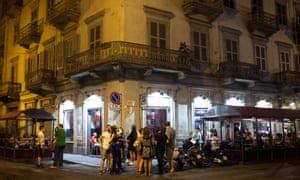

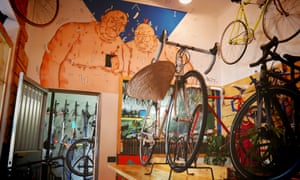
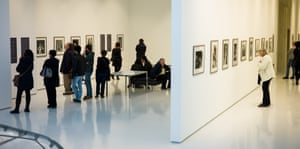

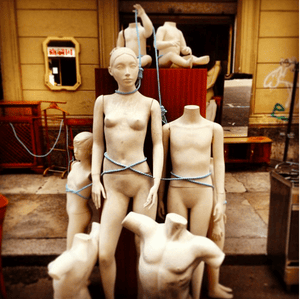
No comments:
Post a Comment